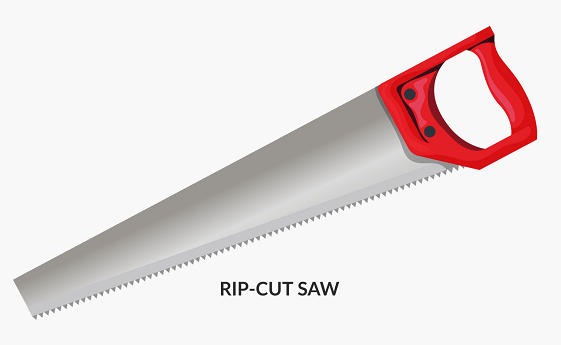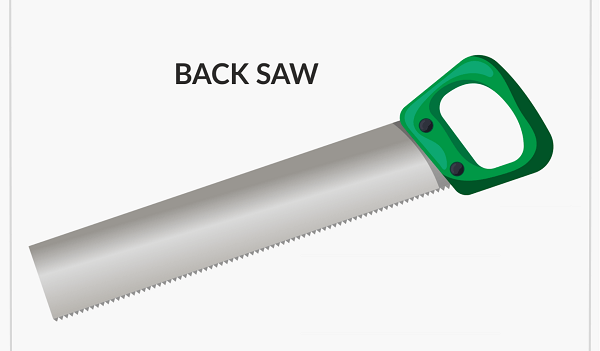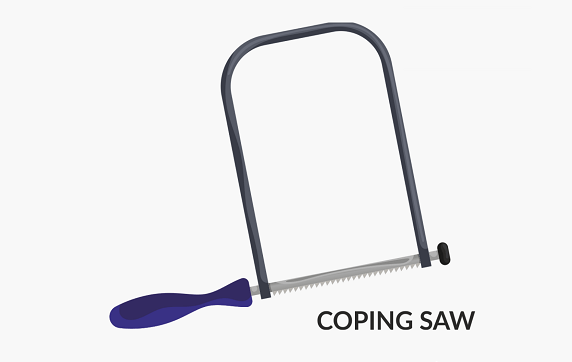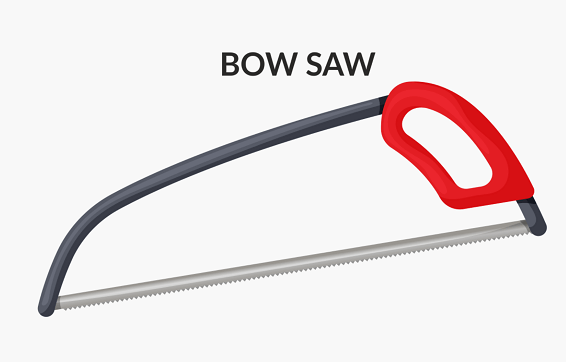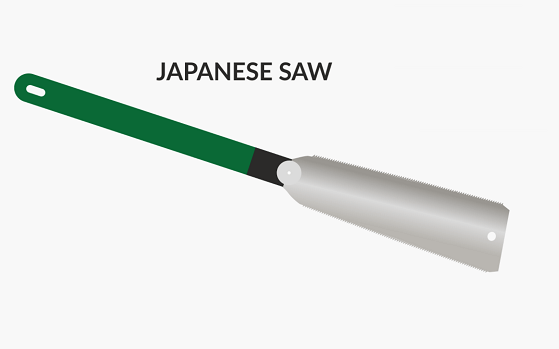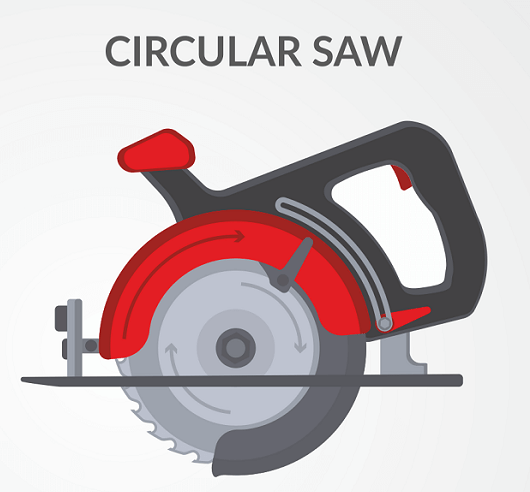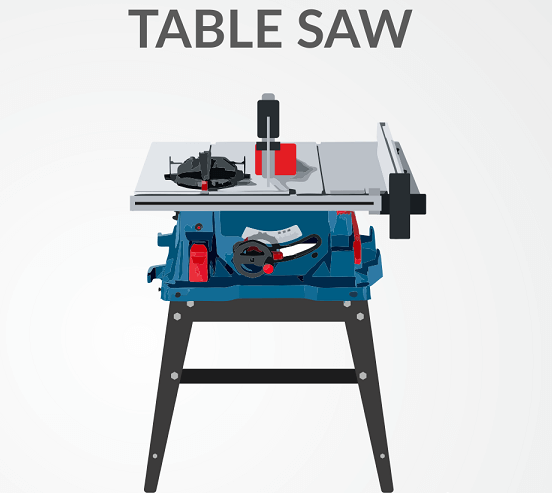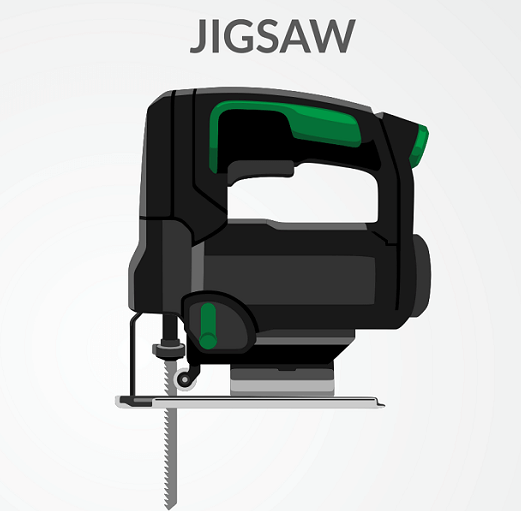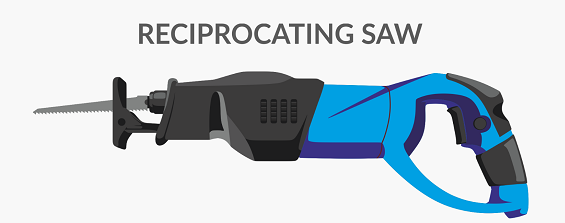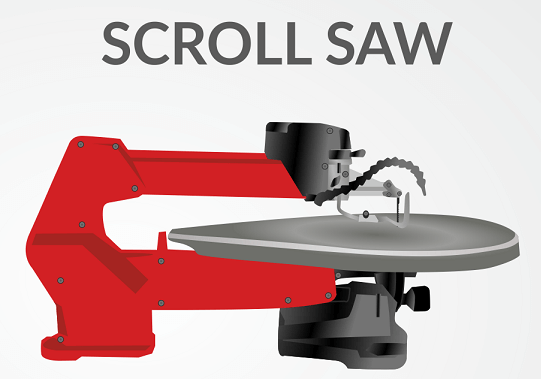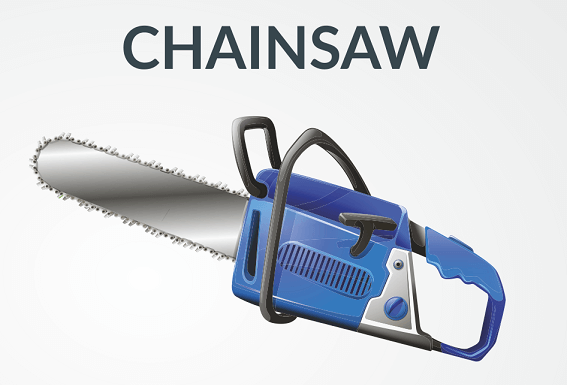Types of Saws and Their Applications
Saws are the unsung heroes of various industries and the backbone of countless DIY projects. They are versatile tools that, when used correctly, can make a significant difference in the efficiency and precision of any task. Whether you’re a professional craftsman, a weekend warrior tackling home improvement, or a hobbyist, choosing the right saw for a specific job is paramount. In this blog post, we’ll explore the wide array of saws available and their applications, helping you gain a deeper understanding of these indispensable tools. So, let’s dive into the world of types of saws and unlock their potential in enhancing your workmanship and project outcomes.
Hand Saws
1. Crosscut Saw
The crosscut saw is a manual cutting tool characterized by its finely spaced teeth and perpendicular cutting action. It is designed to make precise, clean cuts across the grain of various materials, particularly wood. Crosscut saws come in various sizes, with smaller versions suitable for intricate detailing work, while larger models are used for more substantial tasks. The teeth are beveled to create a slicing action, ensuring a smooth and accurate cut.
2. Rip Saw
In contrast to the crosscut saw, the rip saw is engineered for cutting parallel to the wood grain. It features larger, more widely spaced teeth that resemble chisels. This design allows for efficient material removal, making rip saws ideal for tasks like dimensioning lumber or creating straight edges along the length of a board. Their aggressive tooth pattern facilitates faster cutting, but may produce rougher surfaces compared to crosscut saws.
3. Back Saw
Back saws are characterized by a reinforced spine along their top edge, which provides crucial rigidity during cutting. They are typically smaller in size and are used for precision work that demands utmost accuracy. The fine teeth of back saws ensure clean, controlled cuts in various materials, making them invaluable in applications like joinery and cabinetry.
4. Coping Saw
Coping saws are a versatile type of hand saw equipped with a thin, replaceable blade stretched across a C-shaped frame. These saws are well-suited for intricate, curved cuts in wood, plastic, or thin metal. They excel in tasks like coping joints in molding or cutting irregular shapes with precision and finesse.
5. Hacksaw
The hacksaw is a hand saw primarily designed for cutting metal. It consists of a fine-toothed, replaceable blade affixed to a U-shaped frame. Hacksaws are indispensable in metalworking applications, capable of producing clean and controlled cuts in materials like steel, aluminum, and copper.
6. Bow Saw
Bow saws feature a narrow, fine-toothed blade stretched tautly between the ends of a curved metal or wooden frame, resembling the shape of a bow. They are excellent tools for cutting green wood, making them a popular choice in gardening, forestry, and bushcraft. The bow saw’s design allows for efficient and powerful cutting strokes, making it an indispensable tool for outdoor applications.
7. Japanese Pull Saw
The Japanese pull saw, or “Nokogiri,” is a unique hand saw known for its razor-sharp teeth and pull-stroke cutting action. This design allows for greater precision and control compared to traditional push-stroke saws. Japanese pull saws are widely used in woodworking and excel in delicate joinery work and intricate detailing.
Applications
Woodworking
Hand saws are indispensable in woodworking, allowing craftsmen to shape, size, and refine wood pieces with precision. Crosscut saws are employed for clean, perpendicular cuts, while rip saws are used for tasks like dimensioning lumber. Back saws excel in joinery work, ensuring tight-fitting joints, while coping saws handle intricate, curved cuts with finesse.
Metalworking
In metalworking, the hacksaw takes center stage. Its fine-toothed blade and sturdy frame enable precise cutting of various metals. From cutting pipes to resizing metal sheets, the hacksaw is an essential tool for fabricators and metalworkers seeking accuracy and efficiency in their projects.
Construction
Hand saws play a vital role in construction projects, particularly when precision and control are paramount. From framing to trim work, hand saws such as crosscut and back saws are employed for tasks like cutting studs, rafters, and molding with accuracy. The bow saw finds its niche in outdoor construction or renovation projects, effortlessly handling tasks like pruning branches or shaping timbers on-site.
Hand saws are versatile tools that find applications across a wide spectrum of industries, owing to their precision and control in cutting various materials. Understanding the different types of hand saws and their respective applications is key to selecting the right tool for the job at hand.
Power Saws:
Power saws are essential tools in woodworking, construction, and various other applications. They offer speed, precision, and versatility, making them invaluable for professionals and DIY enthusiasts alike. In this section, we’ll delve into the different types of power saws, exploring their descriptions and the wide range of applications they excel in.
1. Circular Saw:
Description: The circular saw is a versatile power tool characterized by its circular blade with sharp teeth. These saws come in both corded and cordless variations, making them suitable for various settings. The circular saw’s blade can be adjusted to achieve different cutting depths and angles, enhancing its adaptability.
Applications: Circular saws are commonly used for straight and beveled cuts in a variety of materials, including wood, plywood, plastic, and metal with the appropriate blade. They are a staple in construction for framing and cutting large boards. Additionally, their portability and ease of use make them popular among DIY enthusiasts for tasks such as building decks, cutting sheet materials, and creating clean, straight lines.
2. Table Saw:
Description: The table saw is a stationary power tool with a flat, circular saw blade mounted on an adjustable table. It features a rip fence that ensures precise, straight cuts. Table saws come in various sizes, from compact benchtop models to larger, cabinet-style versions with powerful motors.
Applications: Table saws are primarily used for making accurate, straight cuts in large sheets of wood, plywood, and other materials. They excel in applications that require consistent dimensions, such as cabinetry, molding, and furniture making. Their precision and repeatability make them a favorite among professional woodworkers and carpenters.
3. Miter Saw:
Description: A miter saw, also known as a chop saw, is designed for making crosscuts and miter cuts in wood and other materials. It features a circular blade that pivots on a hinged arm, allowing for precise angle adjustments. Miter saws can be either stationary or portable.
Applications: Miter saws are indispensable for projects that demand precise angle cuts, such as crown molding, picture framing, and trim work. Their ability to cut at various angles with speed and accuracy makes them a go-to tool for professionals in construction and carpentry. DIYers find them valuable for enhancing the aesthetics of their projects.
4. Jigsaw:
Description: The jigsaw is a handheld power tool with a narrow, reciprocating blade that moves up and down. It’s highly maneuverable and well-suited for making intricate and curved cuts in a wide range of materials.
Applications: Jigsaws are perfect for cutting curves, circles, and intricate patterns in materials such as wood, plastic, metal, and laminate. They are commonly used in woodworking for tasks like creating intricate scrollwork and cutting out sink openings in countertops. Additionally, jigsaws are favored in DIY projects for their ability to bring creativity and customization to the forefront.
5. Reciprocating Saw:
Description: The reciprocating saw, often referred to as a “sawzall,” is a handheld power tool with a blade that moves back and forth. This tool is designed for rough cutting and demolition tasks.
Applications: Reciprocating saws are widely used in demolition and renovation work to cut through a variety of materials, including wood, metal, and plastic. Their aggressive cutting action makes them suitable for tasks like pruning branches, removing old pipes, and cutting openings in walls.
6. Band Saw:
Description: The band saw features a long, continuous blade with teeth that rotate on two large wheels. It’s a versatile and precise cutting tool, available in both stationary and portable versions.
Applications: Band saws are prized for their ability to make straight, curved, and intricate cuts in wood, metal, and other materials. They are commonly used in woodworking for tasks like resawing lumber, cutting curves, and crafting intricate designs. Metalworkers also rely on band saws for precision cutting.
7. Scroll Saw:
Description: The scroll saw is a specialized saw designed for making intricate, detailed cuts in thin materials. It features a thin, narrow blade that moves up and down, making it perfect for delicate work.
Applications: Scroll saws are popular among hobbyists and craftsmen for creating intricate scrollwork, detailed inlays, and fretwork designs in thin materials like wood, plastic, and metal. They offer a level of precision that other saws can’t match.
8. Chainsaw:
Description: The chainsaw is a powerful, motorized saw with a rotating chain that has teeth. It is typically used for cutting down trees, pruning branches, and other outdoor applications.
Applications: Chainsaws are primarily employed in forestry and arborist work, as well as for general outdoor maintenance. They are instrumental in felling trees, bucking logs, and maintaining landscapes. Chainsaws come in various sizes and power levels to suit different tasks, from lightweight pruning to heavy-duty logging.
9. Coping Saw:
Description: The coping saw is a slender, fine-toothed saw with a narrow, U-shaped frame. It features a replaceable, thin, and flexible blade that is held in tension by the frame. This design allows for intricate and precise cuts, making it an invaluable tool for intricate woodworking tasks.
Applications:
- Trim Work: Coping saws are extensively used in trim carpentry for precise cuts on moldings, baseboards, and other decorative elements. They excel in making detailed, curved cuts that seamlessly fit around corners and irregularities in the material.
- Joinery and Dovetailing: Coping saws are often employed in tandem with dovetail saws for the intricate process of creating dovetail joints. They are ideal for removing excess wood in the tails of a joint.
- Fretwork and Scrollwork: In woodworking, coping saws are favored for fretwork and scrollwork, where delicate, intricate patterns are required. They allow for the creation of intricate designs in wood, producing stunning visual effects.
10. Dovetail Saw:
Description: The dovetail saw is characterized by its narrow, thin blade and reinforced back, which provides rigidity and stability during precise cuts. It is specifically designed for creating dovetail joints, known for their exceptional strength and aesthetic appeal in woodworking.
Applications:
- Dovetail Joints: As the name suggests, the primary application of a dovetail saw is cutting dovetails. It excels at creating the precise, angled cuts required for this type of joint, which is commonly used in cabinet making, furniture construction, and other fine woodworking projects.
- Fine Joinery: Dovetail saws are also employed for other intricate joinery work where precision is crucial. This includes tasks like tenon and mortise joints, finger joints, and other detailed cuts that demand accuracy.
11. Flush Cut Saw:
Description: The flush cut saw, also known as a pull saw or double-edged saw, features a flexible blade with fine teeth designed to make smooth cuts without damaging surrounding surfaces. It’s characterized by its ability to cut on both the push and pull strokes, making it a versatile tool for delicate trimming work.
Applications:
- Trimming Dowels and Flush Cutting: The flush cut saw is frequently used in woodworking for trimming dowels, plugs, or any protruding joinery elements. It ensures a clean, flush finish without causing any damage to the surrounding material.
- Removing Excess Material: In situations where excess material needs to be removed without disturbing the adjacent surface, such as in laminate or veneer work, the flush cut saw is the tool of choice.
12. Keyhole Saw:
Description: The keyhole saw, also known as a compass saw, is a small, pointed saw with a narrow, tapered blade. Its design allows for precise cutting of intricate shapes and patterns, making it indispensable in various woodworking and DIY applications.
Applications:
- Cutting Interior Openings: The keyhole saw is specifically designed for making interior cuts, such as keyholes, slots, and other detailed shapes. It’s commonly used for tasks like installing locks, handles, and electrical outlets.
- Intricate Woodworking: Woodworkers often rely on keyhole saws for crafting intricate designs and shapes in wood, particularly in fine woodworking projects and artistic applications.
13. Veneer Saw:
Description: The veneer saw is one of the specialized types of saws designed for cutting thin veneer sheets with precision and finesse. It typically features a narrow, double-edged blade with fine teeth, allowing for clean and accurate cuts in delicate veneer materials.
Applications:
- Veneer Work: As the name implies, veneer saws are indispensable for tasks involving veneer sheets. They allow for precise cutting to fit veneer pieces seamlessly onto a substrate, enhancing the overall aesthetic of furniture and cabinetry.
- Marquetry and Inlay Work: Veneer saws are commonly used in marquetry and inlay work, where intricate patterns and designs are created by assembling various veneer pieces. The tool’s precision is crucial in achieving seamless and visually appealing results.
Saws have undergone significant refinement, leading to the development of specialized types of saws tailored for distinct cutting tasks. It’s crucial to recognize that not all materials can be effectively cut with the same saw. To achieve precise results, specific types of saws are designed to address unique cutting requirements.
Considering the nature of the material and the desired cut, consulting the comprehensive list of types of saws provided can guide you towards the optimal choice of saw. Should you encounter any challenges in making your selection, feel free to reach out through the comments section and share your opinions about the types of saws. We’re here to assist you. Additionally, we welcome your thoughts and insights in the comments below.


